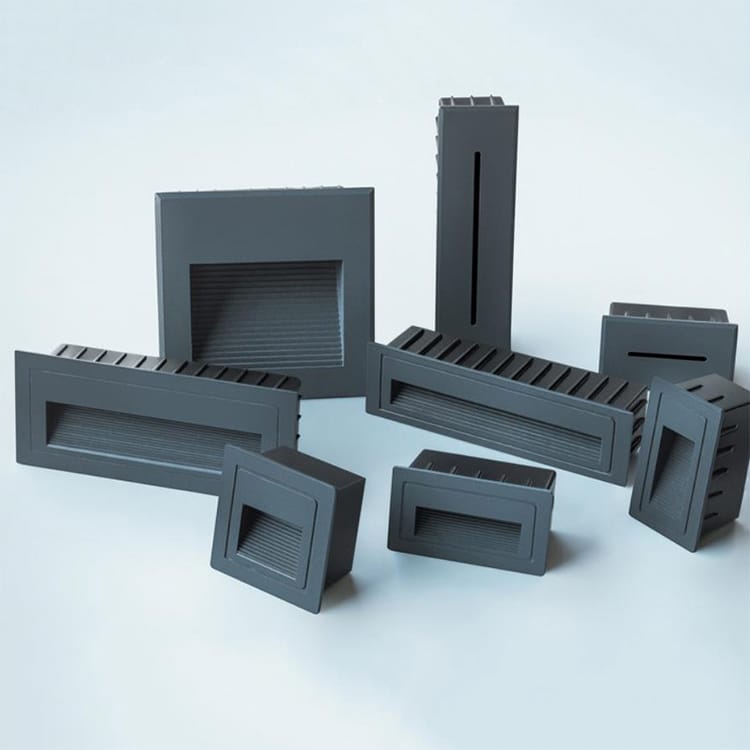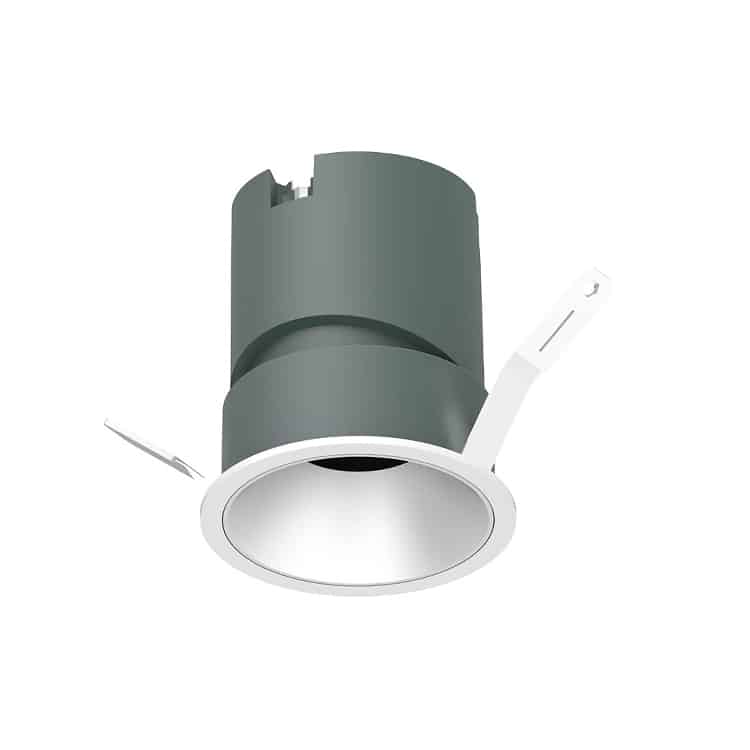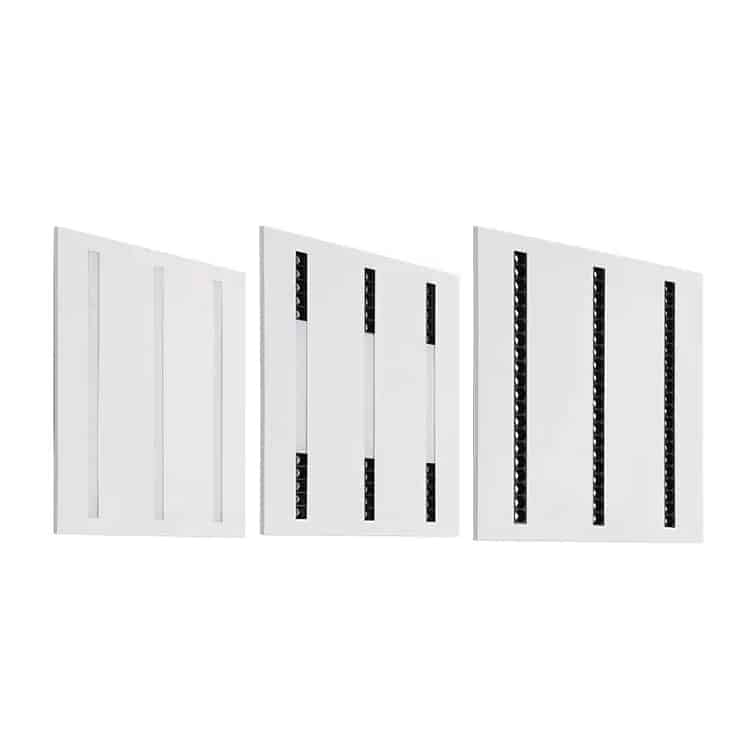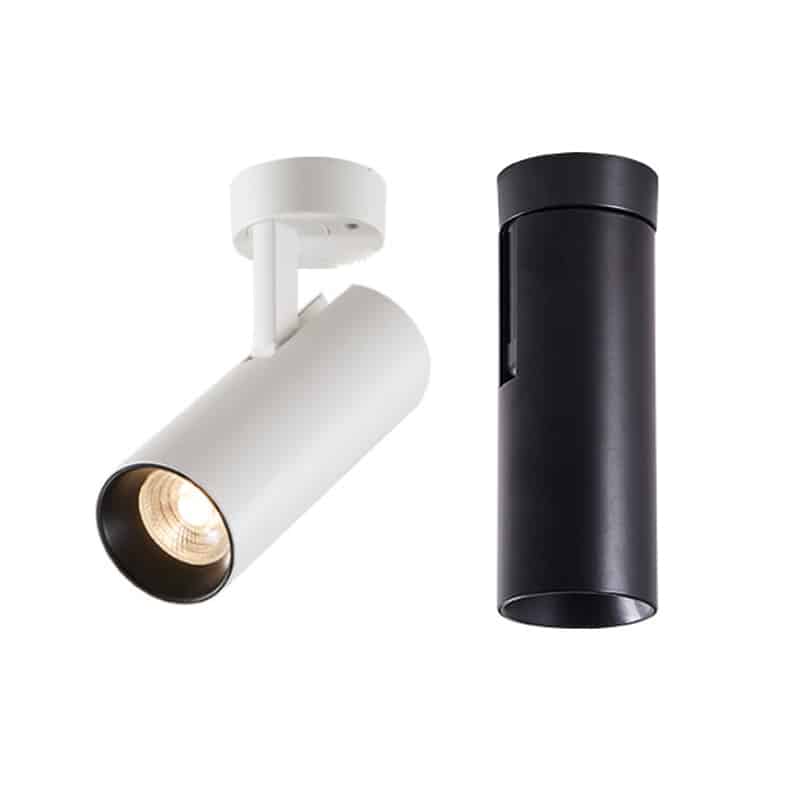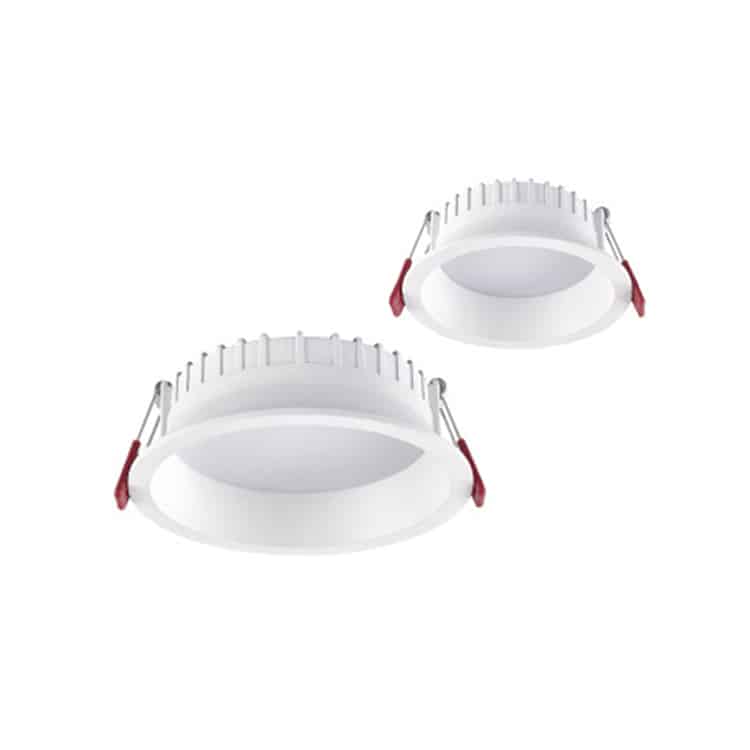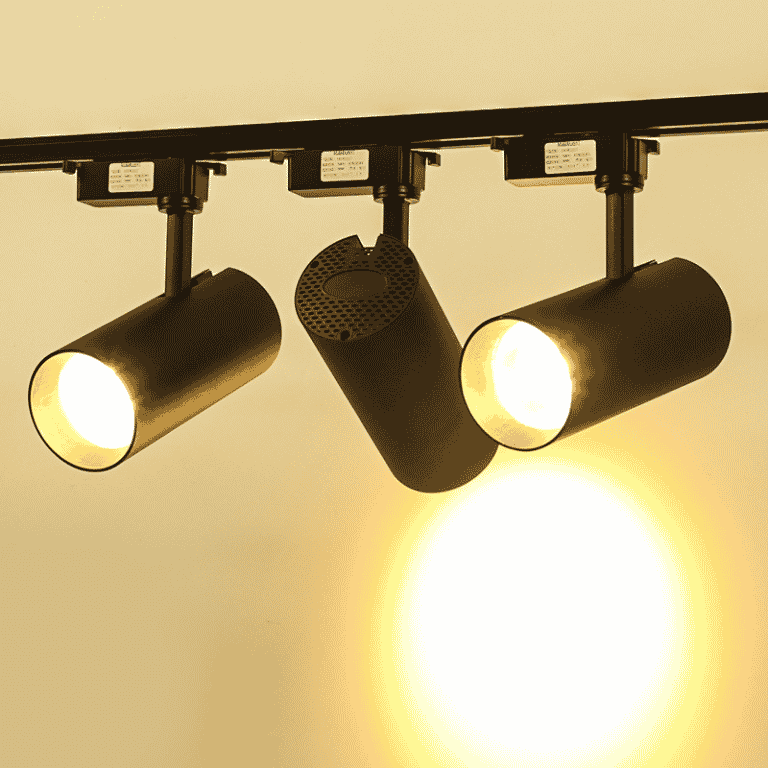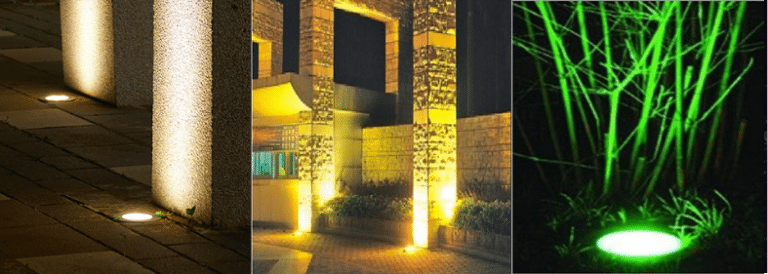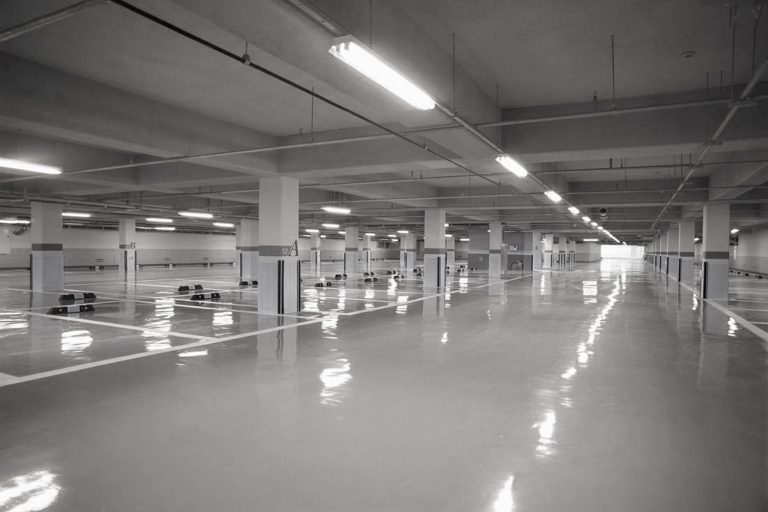Reasonable and artistic lighting design has the power to transform the quality of illumination in a space, significantly enhancing the overall image and visual appeal of interiors. In the realm of lighting design, the difference between indirect and direct lighting is an unavoidable topic. Let’s delve into the distinction between indirect and direct lighting and explore the advantages of each. Additionally, we’ll discover some of the currently popular lighting ideas.
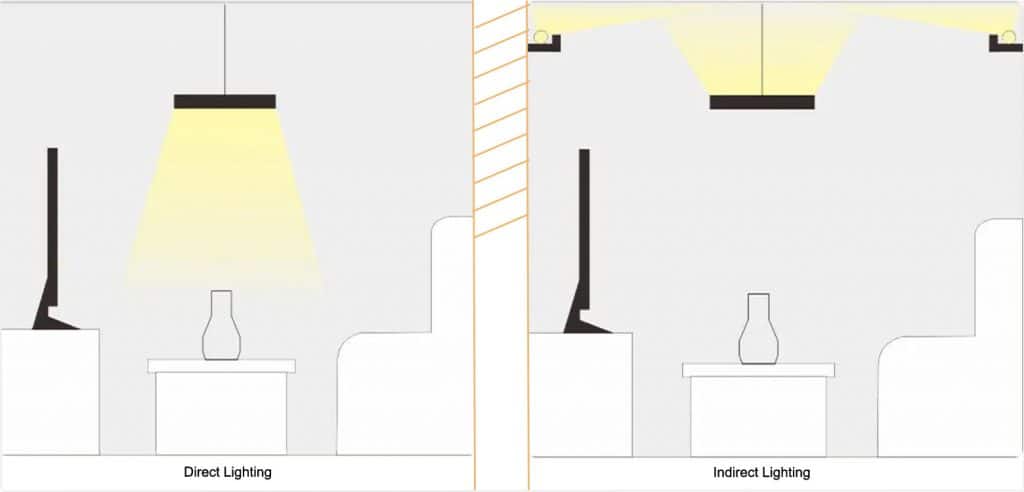
What is indirect lighting?
Indirect lighting, also known as reflected lighting, refers to the lighting effect where the light fixtures do not directly cast light onto the illuminated object, but are reflected through walls, mirrors, or floors. LED indirect lighting is an essential and important part of modern interior decoration, serving a purpose beyond simple illumination. It transforms into a diverse decorative art form. Ideal indirect lighting is like a ray of natural light coming from the crack of the door. In modern interior design, the emphasis is on creating a comfortable and aesthetically pleasing lighting environment, making indirect lighting an ideal choice to achieve this goal.
What is direct lighting?
Direct lighting is the primary means of illumination in a space. It means that when the light is emitted through the lamp, more than 90% of the light will reach the plane that requires illumination. This effect is employed to achieve prominent highlighting, emphasizing the focal points and creating a central focus within the space. Direct lighting can serve as a foundational, functional, focal, or decorative lighting method.
When and where to use indirect lighting?
Indirect lighting is generally not used as the primary source of illumination but is often combined with other lighting methods. Its main function is decorative, adding a sense of artistic ambiance to a space. Whether in commercial spaces, hotels, restaurants, office areas, or residential spaces, wherever there are requirements for space design and lighting effects, indirect lighting design is commonly employed.
- In commercial spaces: suitable for ceilings, wall columns, stairs, walkways, and shops.
- In dining spaces: works well on ceilings, walls, floors, and bar areas.
- In residential spaces: applicable in bedrooms, living rooms, apartments, and hotels.
- In office spaces: suitable for entrances, corridors, lobbies, and leisure areas like coffee lounges, providing a relaxing environment for people under high work pressure to take a break and change their mood
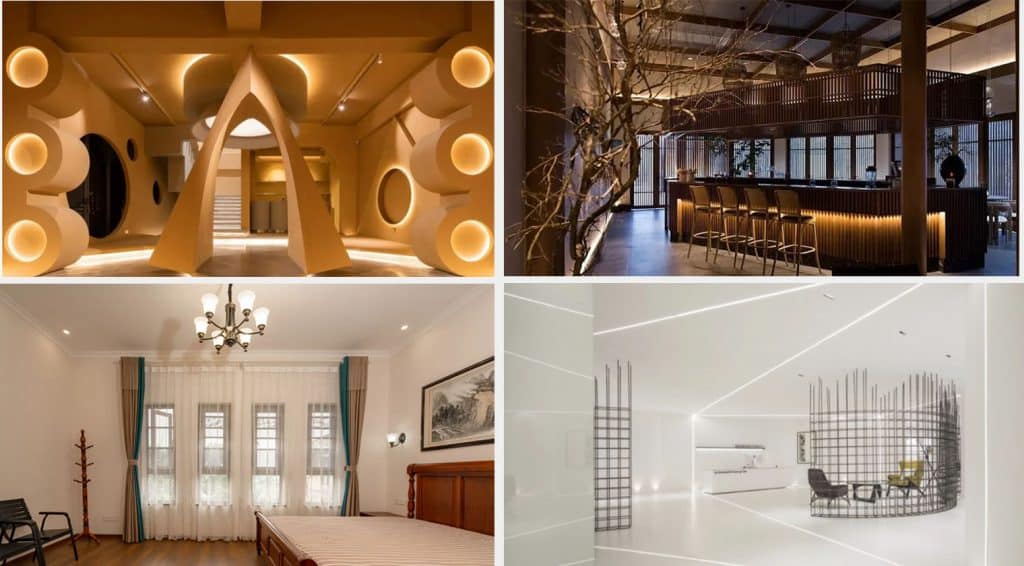
When and where to use direct lighting?
All places that require general lighting, such as residential spaces, factories, or large commercial spaces like offices, need sufficient brightness. For example, if you want to illuminate a specific area to make it easier for tasks that require focus, such as working on a computer, reading, or preparing food, you would need direct lighting fixtures. On the other hand, if you want to create a visually guided effect on a vase, a hanging painting, or a piece of art, it’s suitable to choose a direct light source as well.
Five Types of Lighting Methods
In addition to direct and indirect lighting, there are three other common lighting methods
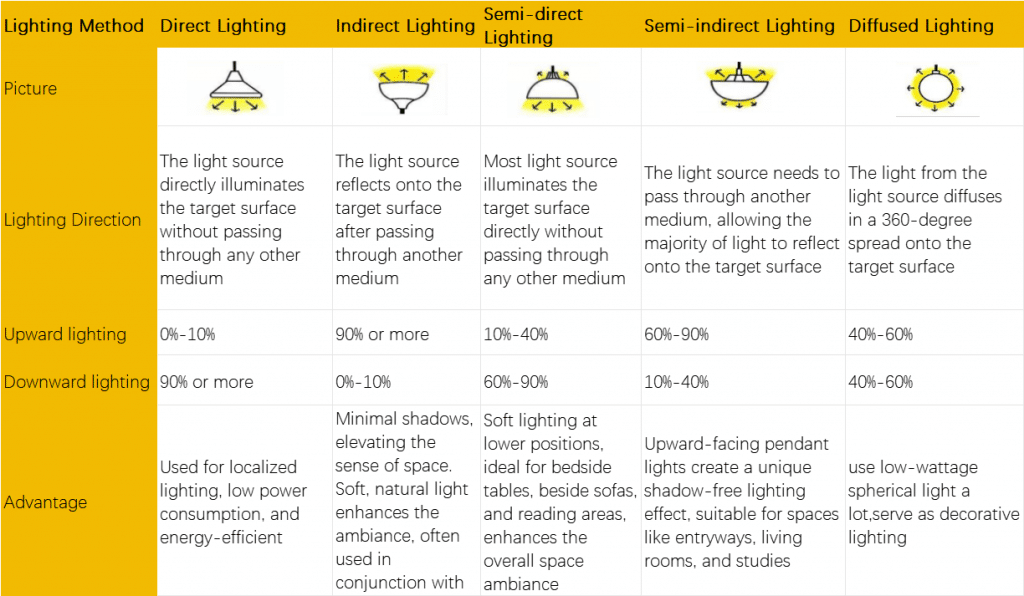
From the table, you already know the difference between direct lighting and indirect lighting.
Two Methods of Indirect Lighting Treatment
◆ Place the light source inside a light trough, allowing the light to strike the ceiling, walls, and floor, and then reflect into the interior as indirect light.
◆ Install an opaque lampshade beneath the light source, directing the light towards a flat ceiling or other objects to reflect as indirect light. For example, wall lights and spotlights that emit light upwards and downwards from the fixture.
Three Elements Should Pay Attention to for Ideal Indirect Lighting
Texture
In some interior designs, overlooking the material quality of illuminated surfaces can lead to poor lighting outcomes. It’s advisable to use rough textures on these surfaces to achieve a desired soft and diffuse lighting effect, as opposed to glossy textures that may not yield the intended result.
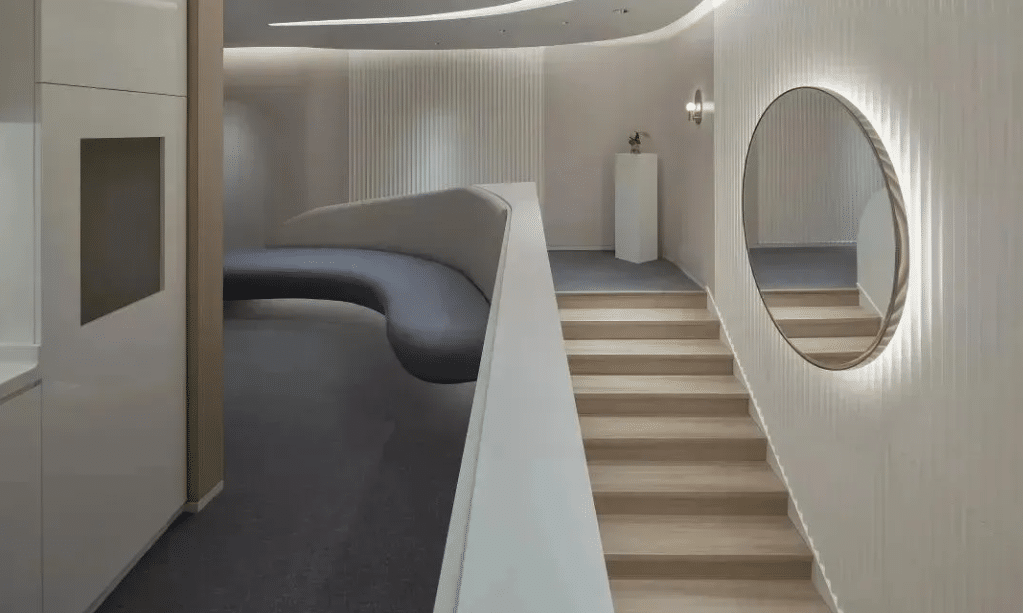
Light-blocking
To achieve the desired indirect lighting effect, it’s crucial to recognize the presence of light-blocking elements. When installing lighting fixtures, careful consideration of the light source’s placement is essential. This ensures that the overall effect of light can be maximized to its fullest potential.
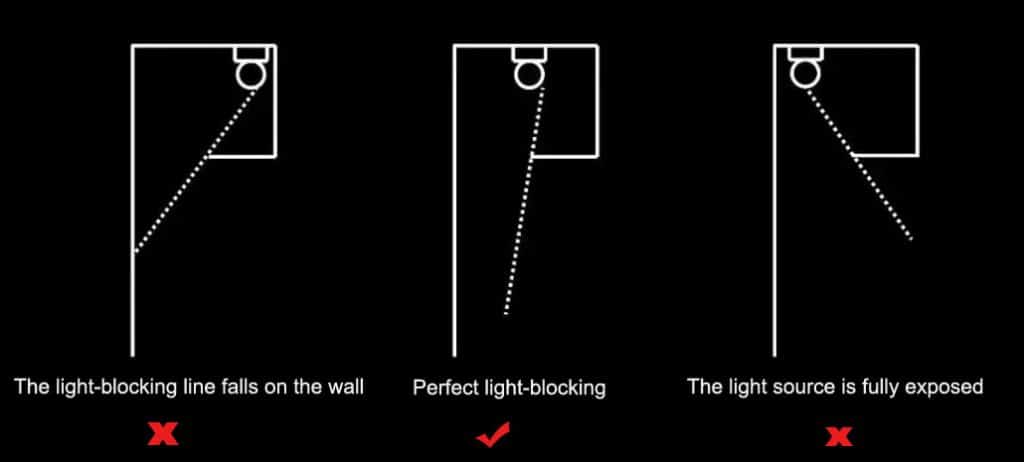
Interval
Generally speaking, the diffusion of light is closely related to gaps or intervals. When there isn’t enough gap, light can be easily affected, resulting in strong contrasts between light and shadow. This can make the lighting appear unnatural and hinder the desired diffusion of light
The relationship between gaps and light diffusion is that the farther the light source is from the illuminated surface, the larger the range of light diffusion. Moreover, this distance often results in more uniform and even lighting。
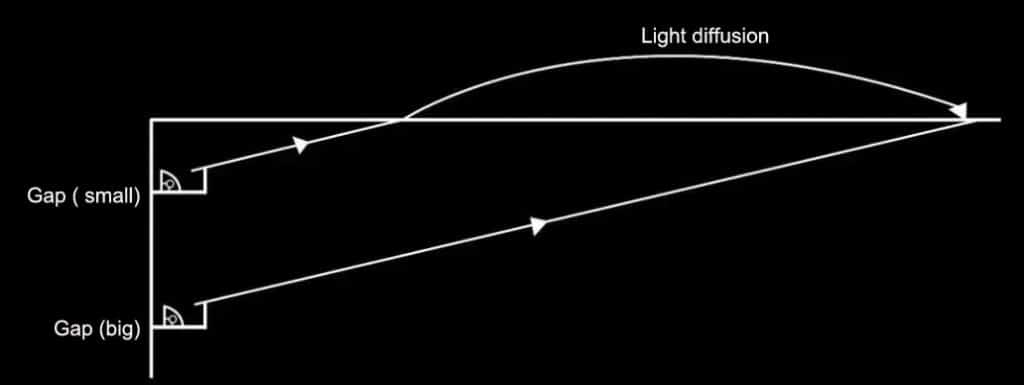
Commonly Used Indirect Lighting Fixtures
Wall Sconces
Floor Lamps
Uplights
Cove Lighting
Recessed Lights
Table Lamps with Shades
Commonly Used Direct Lighting Fixtures
Ceiling Fixtures ( pendant lights, chandeliers, recessed and flush-mount fixtures that provide illumination downward)
Task Lamps
Spotlights
Track Lighting
Downlights
Under-Cabinet Lighting
Direct Lighting and Indirect Lighting examples

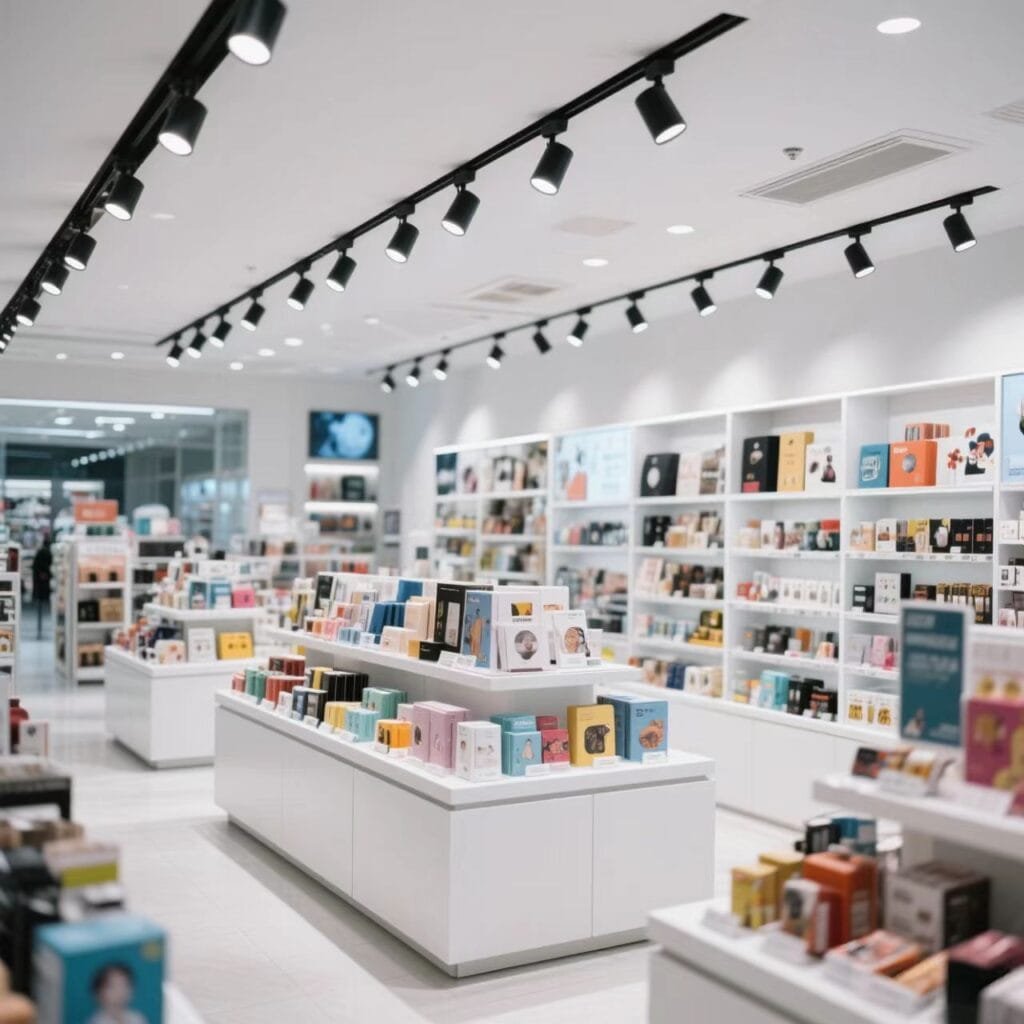
Those are direct lighting examples using LED linear lights and track lights for basic lighting.


Those are indirect lighting examples used in a hotel room. The light is comfortable.
In conclusion, both indirect and direct lighting have their pros and cons. Indirect lighting, due to the obscured light source, cannot fully illuminate the space, requiring higher electrical power to achieve the basic illumination needs. On the other hand, direct lighting, with the light source shining directly into the space, can create glare and an uncomfortable atmosphere. Lighting design is not just about choosing lights; it is a blend of technical and artistic elements. In real-life lighting design, designers flexibly use various lighting techniques to create visually stunning environments.
| Features | Direct lighting | Indirect Lighting |
| Lighting direction | downward | upward/reflected |
| Brightness | higher | softer |
| Glare | possible | no |
| Installation | easy | hiden design |
| Energy efficiency | high | low |
| Best for | Offices, Retail, Outdoor | Hotels, Homes, Lobbies |

Hello, customers
My name is Ricky Wang, I’m the business manager of GRNLED. I have been in LED lights industry for more than 10 year. Feel free to contact us. I’m happy to provide you the best service and products.
Email: info@grnled.com | WeChat: ledfixture

